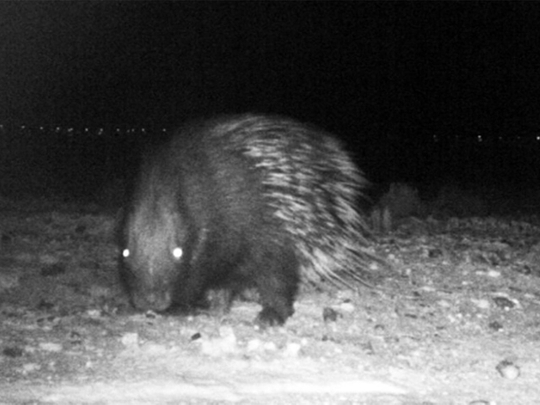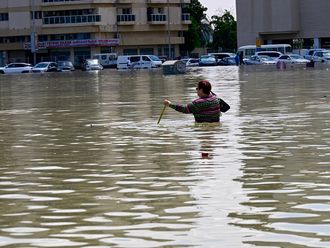
Dubai: Two animals that were believed to have been extinct from Abu Dhabi’s wildlife population have been rediscovered.
The Environment Agency - Abu Dhabi (EAAD) announced that thanks to a hidden digital camera, the Indian crested porcupine (Hystrix indica) and the Sand Fox (Vulpes rueppellii) were spotted in the Al Dhafra area.
Dr Shaikha Salem Al Dhaheri, Executive Director of the Terrestrial and Marine Biodiversity Sector at the EAAD, said that over the last twenty years, the authority has carried out comprehensive research and studies to understand the local biodiversity of ecosystems.
“The rediscovery of the porcupine and the Sand Fox emphasises the importance of using modern technologies and technologies, such as remote cameras, to conduct intensive monitoring and evaluation surveys,” she said.
“The rediscovery of a fox in these areas is a good sign that its habitats are well managed," said Dr Shaikha.
The porcupine was thought to have been extinct, while the Sand Fox was last seen in Abu Dhabi 13 years ago.
The discovery of these two species means that the total types of mammals recorded in Abu Dhabi adds up to 36.
"The agency uses more than 35 cameras to monitor habitats and some protected areas, with the aim of rediscovering species that have not been seen recently and are registered in the environmental database of the EAAD," said Rashed Al Zaabi, a mammalian specialist, who was quoted in the state news agency WAM.
“Once the sites are identified, the agency will try to find more porcupines in the wild to preserve the rare species and other mammals,” he said.
What is the Sand Fox?
The Sand Fox is slightly smaller in build than the red fox. Its ears are long and large in relation to the head, with a coat colour ranging from beige to pale sand.
Their average weight is 1.5kg to 1.8kg. It is nocturnal, and goes out at night to hunt rodents, reptiles, birds and insects, as well as when it feeds on wild fruits.
Their typical habitat includes open and stony deserts. They are able to survive in areas with little available water, and are present across the Arabian Peninsula eastwards to Pakistan and northwest to Jordan.
They seem to avoid the extreme arid regions in the middle of the Sahara, and the Empty Quarter, and are usually found on the fringes of mountains and near oases.
Source: Dubai Desert Conservation Reserve












